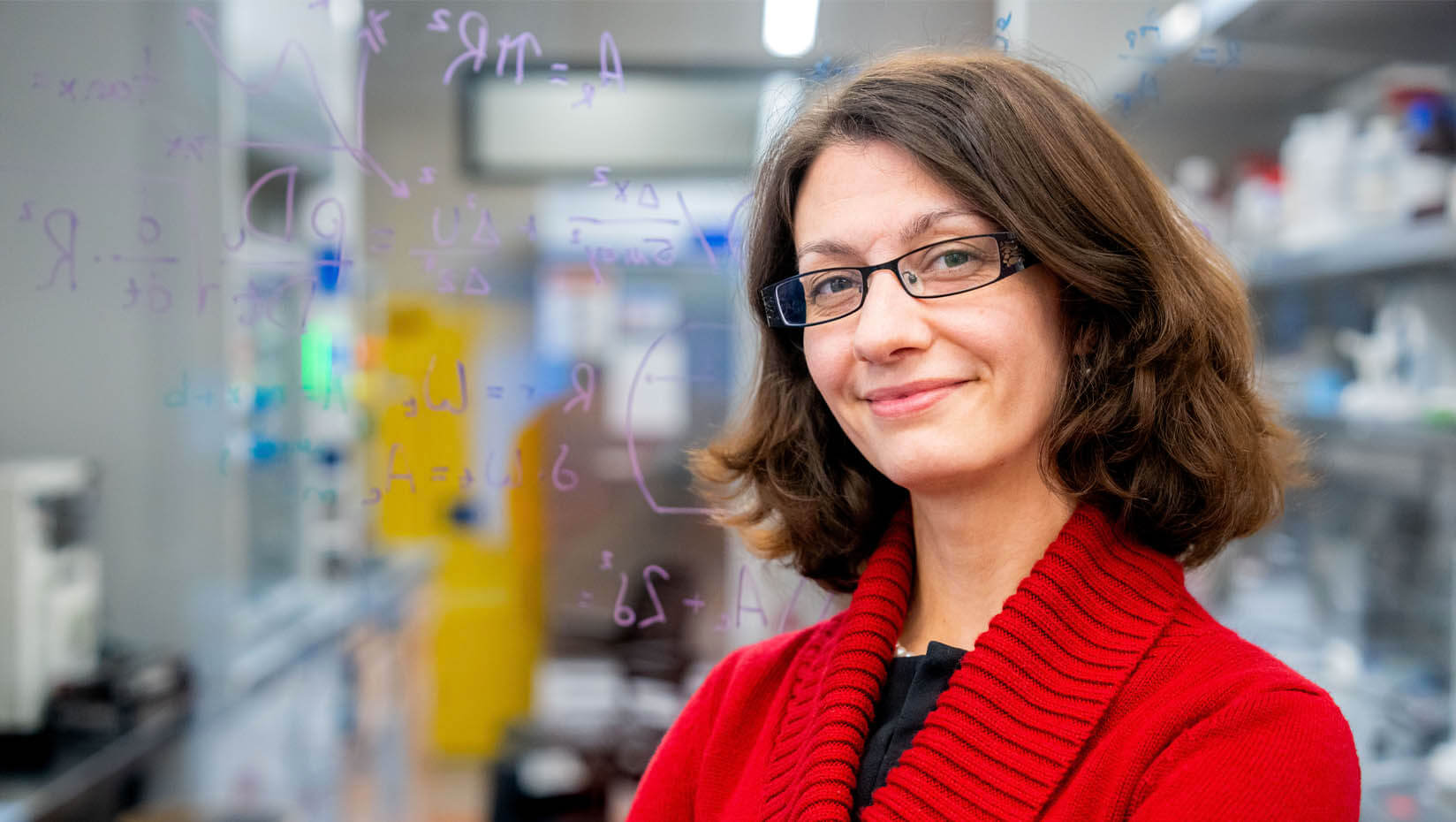
NSF awards Howell $550K for microfluidics research and development with Sappi
University of Maine research in partnership with Sappi North America has received a $550,000 award from the National Science Foundation to explore how existing mass produced technologies can be used to study and scale up microfluidic technology.
Microfluidics studies the behavior of certain fluids through microscopic channels. The movement can be used to learn more about the microscopic chemical and biological properties of those fluids. Water testing and disinfecting technology uses microfluidics, and it can be applied to fast-growing markets such as wearable technology and low-cost sensor systems.
Most people, however, have likely interacted with microfluidic technology in the past few years through COVID-19 tests.
“When we can control the way that liquid moves around within a device, we can control what it interacts with,” says Caitlin Howell, principal investigator of the study and an associate professor of biomedical engineering, for University of Maine. “COVID tests are a great example of this, where the liquid sample is passed over detector molecules which capture pieces of the virus linked to a marker that we can see.”
With the pandemic and climate change driving disease outbreaks and freshwater infrastructure, the importance of access to affordable, widely available and quickly produced microfluidic technology has never been clearer.
Howell found an extraordinary partner in scaling up the technology used for microfluidic research and application: Sappi North America, a pulp and paper company with an important commercial presence in Maine.
Part of Sappi’s operation is manufacturing textured surfaces for various applications. The surfaces are not only watertight and ultrathin, but they are produced in rolls at a rate of 4,000 square meters per hour. Customers can request specific patterns — leather grain, geometrics and wood grain have been among the most popular — and then cast or press the paper or film to impart the pattern on coated fabrics and decorative laminates.
Sappi materials are used mostly for the fashion industry, but Howell and Mark Hittie, director of release business strategy at Sappi North America, saw its scientific potential. Instead of mass producing materials with stylish patterns, the materials could be textured with the channels needed for microfluidics testing.
“We congratulate Caitlin Howell and the University of Maine on this NSF grant,” says Hittie. “Microfluidics exploits the nanoscale texturing capability of Sappi’s manufacturing processes, and we look forward to our participation in scaling up microfluidic applications for commercial readiness.”
The ability to quickly test, scale and print rolls of this technology would be a game changer for microfluidics. It could even go beyond relatively simple applications such as water testing entering into cancer diagnostics and vaccine production.
The partnership between UMaine and Sappi also demonstrates how existing manufacturing infrastructure and knowledge can be used in new ways, particular in the burgeoning and increasingly important fields of biotechnology.
The project will train students in both research and the entrepreneurial skills needed to bridge the gap from the lab to the market by offering workshops through UMaine’s Research Commercialization Training series and involving students in all aspects of the work, particularly through the NSF’s I-Corps program.
“Through courses and informal training, students will build career skills and an entrepreneurial mindset that will enable them to translate innovations into societal impact whether they pursue work in startups, larger companies like Sappi or academia,” says Renee Kelly, associate vice president of strategic partnerships, innovation and engagement.
UMaine and Sappi have also partnered with the Wyss Institute at Harvard University to continue research and development to clear the way to commercialization of the technology.
Contact: Sam Schipani, samantha.schipani@maine.edu
